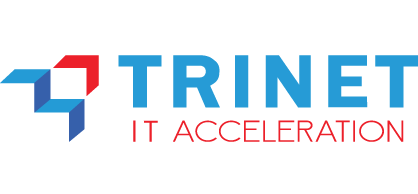Solutions > MDR / SOC as a Service

In today’s fast-evolving business landscape, organizations are increasingly adopting cloud-based security services, such as Managed Detection and Response (MDR) and Security Operations Center (SOC) as a Service, to bolster their cybersecurity posture. Transitioning from traditional capital expenditures (CapEx) to operational expenditures (OpEx) provides businesses with enhanced scalability, flexibility, and ongoing threat monitoring. However, this shift to cloud-based security models introduces both opportunities and challenges. Here are five key challenges businesses may face when adopting MDR and SOC as a Service:
While MDR and SOC services provide robust protection, organizations still face evolving security threats like zero-day attacks, insider threats, and advanced persistent threats (APT), which require continuous monitoring and proactive responses.
Many organizations struggle with meeting the necessary compliance requirements, such as GDPR or HIPAA, when using MDR and SOC services. Ensuring that cloud providers adhere to strict data security standards can be complex and may require frequent audits.
Integrating third-party MDR and SOC solutions with an organization’s existing IT infrastructure, including legacy systems, can be challenging. Ensuring seamless interoperability between on-premise and cloud-based solutions requires careful planning and execution.
Finding skilled professionals to manage and optimize MDR and SOC services can be a significant hurdle. The cybersecurity talent shortage is a growing concern, making it difficult for organizations to effectively oversee threat detection and response operations.
While cloud-based MDR and SOC services reduce CapEx, managing the ongoing operational costs (OpEx) can be challenging, particularly as organizations scale their security requirements. The need for continuous monitoring and response may lead to unpredictable service costs.
- 24/7 Security Monitoring → These services provide continuous monitoring of networks, endpoints, and cloud environments to detect any suspicious activities or breaches in real-time.
- Advanced Threat Detection → Utilizing cutting-edge technology, MDR and SOC services detect sophisticated threats, including zero-day attacks, ransomware, insider threats, and advanced persistent threats (APT).
- Incident Response → In the event of a security breach, MDR and SOC services ensure immediate detection and remediation to minimize the impact and prevent further damage.
- Compliance Assistance → MDR and SOC services help businesses ensure compliance with industry regulations and standards, such as GDPR, HIPAA, and more, by offering insights and reports on security and data protection.
- Improved Security → By leveraging MDR and SOC services, organizations can quickly detect and mitigate emerging threats, significantly reducing the risk of a successful cyberattack.
- Cost Efficiency → These services eliminate the need to build and maintain a dedicated in-house security team, offering a more cost-effective solution for smaller and medium-sized businesses.
- Scalability → As the needs of your business grow, MDR and SOC services can easily scale, providing additional security resources and support as necessary.
- Expert-Driven Threat Response → With experienced security professionals monitoring your systems, businesses gain access to expert-level response capabilities to mitigate security incidents swiftly.
- Financial Services → Protecting sensitive financial data is crucial, and MDR & SOC services ensure continuous monitoring of financial institutions to detect and respond to any threats quickly.
- Healthcare → Healthcare providers rely on MDR & SOC services to ensure that patient information and medical systems are secure, complying with regulations like HIPAA.
- Retail → Retailers can protect their customer data and transaction systems from fraud, malware, and other cyber threats, safeguarding both business operations and consumer trust.
- Manufacturing → As industrial systems and production lines become connected, MDR & SOC services help protect against cyber threats that could disrupt critical manufacturing operations.
- Continuous Threat Detection → Our 24/7 monitoring and proactive threat detection ensure your business is protected from the latest cyber threats.
- Rapid Incident Response → Our security experts are ready to swiftly respond to any security incident, minimizing potential damage to your business.
- Security Compliance → We help businesses navigate complex regulatory environments, ensuring your security practices meet the necessary compliance standards.
- Scalable Solutions → Whether your business is small or large, our MDR & SOC services scale to meet your security needs as you grow.













